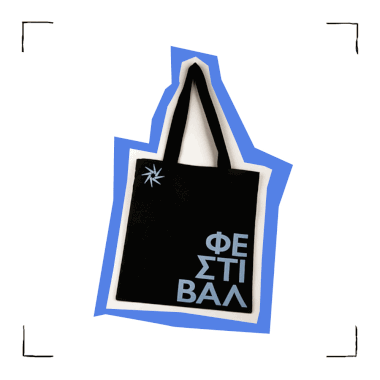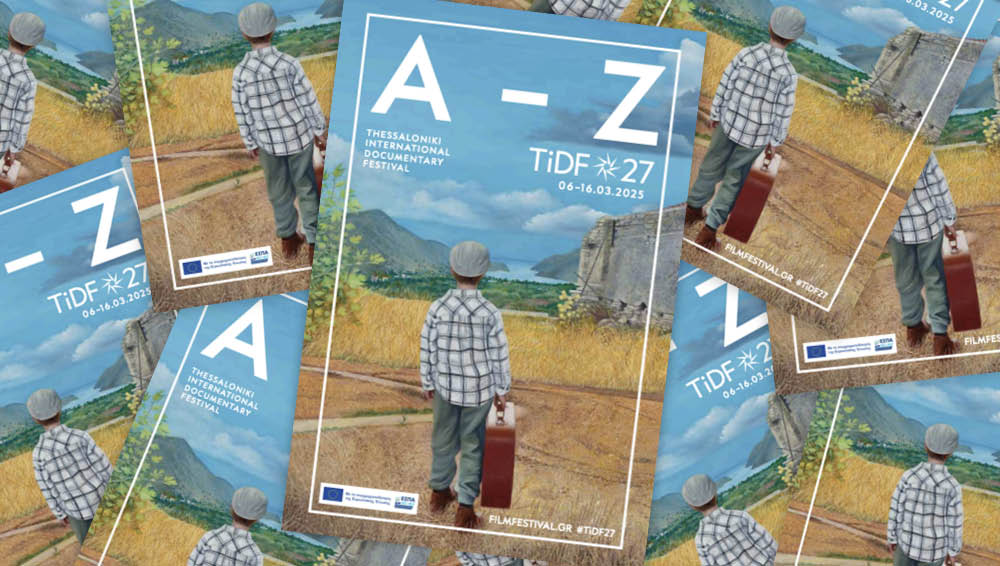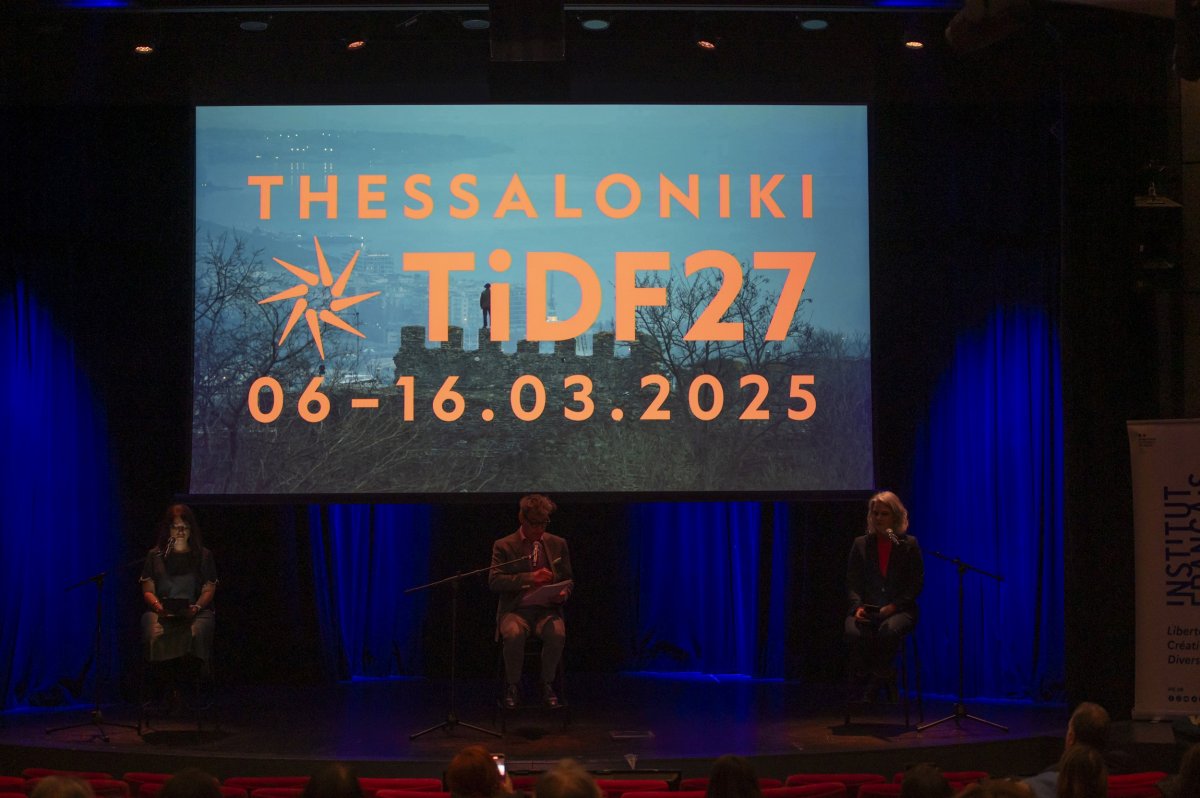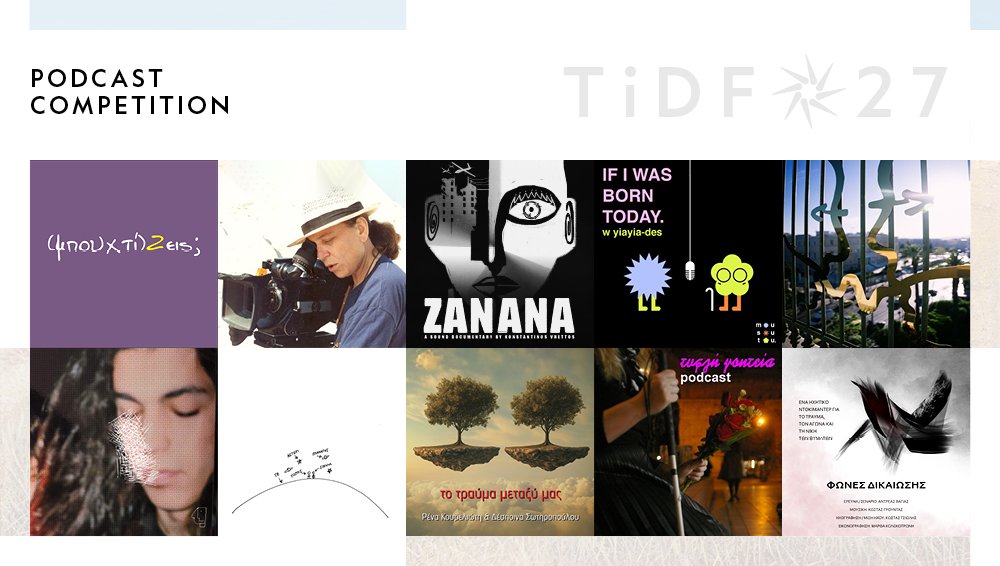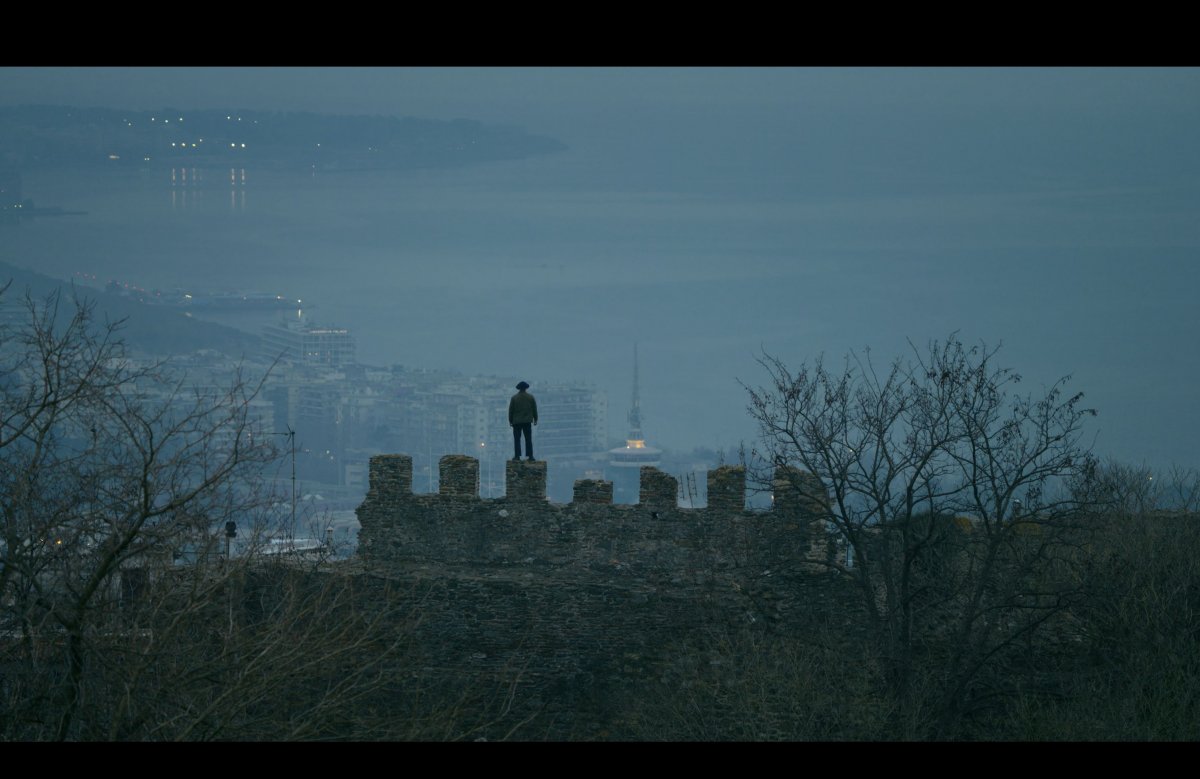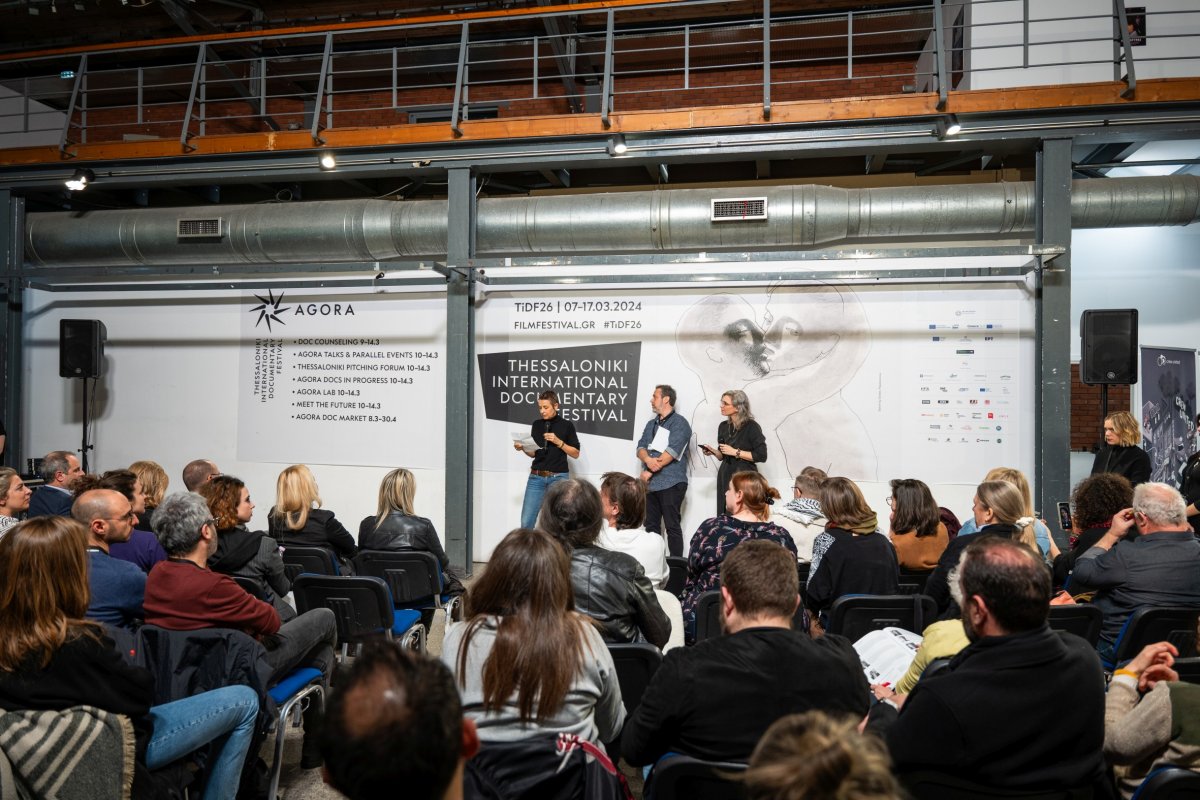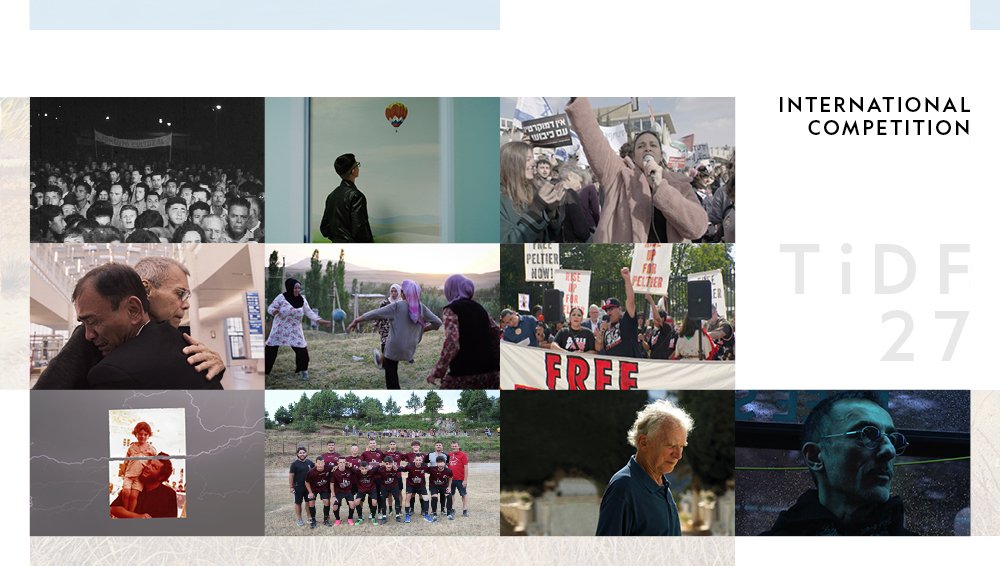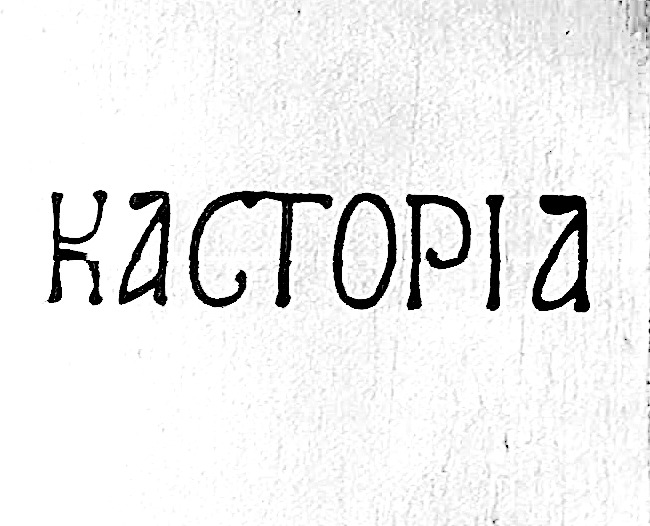18th Thessaloniki Documentary Festival
Images of the 21st Century
11-20 March 2016
PRESS CONFERENCE
WINDBAG OF AEOLUS / DREAMING OF LIFE /
IN SOLITUDE OR IN SOLIDARITY?
Images of the 21st Century
11-20 March 2016
PRESS CONFERENCE
WINDBAG OF AEOLUS / DREAMING OF LIFE /
IN SOLITUDE OR IN SOLIDARITY?
As part of the 18th Thessaloniki Documentary Festival, directors Nasim Alatras (Windbag of Aeolus), Morteza Jafari (Dreaming of Life) and members of the team of directors Chryssa Tzelepi and Stavroula Poulimeni (In Solitude or in Solidarity?), a documentary co-created with Irini Karagkiozidou, Akis Kersanidis, Emilia Kougioumtzoglou and Kiki Moustakidou, attended a press conference on Wednesday March 16th, 2016.
Nasim Alatras was the first to speak. In his documentary Windbag of Aeolus, he introduces the issue of wind turbines in Greece. The director referred to how he came up with the film’s subject; while visiting the island of Cephalonia, he spotted the wind turbines installed on the mountains, without knowing precisely what they were. “I wanted to have a close look so I could learn exactly what they were, since I was born and grew up in a mountain and I love the mountains. When I did go after all and saw the wind turbines, I realized that people should come and see their true stature up and close and not stay with a view from afar that might resemble a beautiful artistic intervention. Instead, they should realize the real dimensions of this issue. So I started researching, while afterwards I contacted my colleagues from the production team and we managed to cover this long research without any financing”. Commenting on the policies around wind power, the director said: “While researching who was actually installing those wind turbines, we came upon small companies. A further research on them, however, revealed that they shared common executives and managers with those large groups of companies we usually refer to as ‘the nation's contractors'. These are 5-6 groups that build small subsidiary companies in each region, gaining permission and subsidy, while bringing the wind turbines from abroad, like Germany or Denmark. Afterwards, they install them on the mountains without caring for what's next, meaning what the wind turbines should actually produce and what should their status be. The film also documents the views of those people who hadn't they lodged appeals for the last twenty years to stop these companies, wind turbines would have been further installed in many mountaintops all over Greece”. Nasim Alatras commented on the public's ignorance concerning wind power: "We have met people who believed that electricity was supplied to their houses straight from the wind turbines. This is a lie promoted by the companies deliberately, who just want to show that this electrical power is cheap and 'clean'." However, the public doesn't know that electricity is being produced when the wind blows and more so under special conditions, while all produced electricity channeled in the grid is alternating current, therefore it needs to be stabilized. Consequently, the more electricity gets produced by wind turbines, the more conventional lignite-fired power plants are needed to stabilize it and supply it smoothly in the grid”. He then added: “The issue of energy is enormous. It is key to the survival of each society and each state and that is why they stir it away from public debate. We knew that the film would annoy, but we dealt with it in order to offer a comprehensive and objective view to the citizens.”
Next up, directors Chryssa Tzelepi and Stavroula Poulimeni talked on behalf of the team of directors behind the documentary In Solitude or in Solidarity?. The film chronicles the operation of the Social Clinic of Solidarity in Thessaloniki, a structure created in the event of the hunger strike of 300 immigrant workers in 2011. “In order to support immigrants' fight, the doctors set up a social clinic and drugstore that would initially help the immigrants, but gradually, the initiative extended also to all people left without insurance and health care. Specifically, during the last years, approximately 3.000.000 people were excluded from the National Health System", Mrs. Poulimeni remarked. On her side, Mrs. Tzelepi added: "It's interesting to see how the recipients of medical aid had changed during those years we follow the Social Clinic. Having begun as a clinic for immigrants, the 'invisible people' with no documents, who were hence excluded from public health, little by little and during the crisis, unemployed and uninsured Greeks found themselves in need of this solidarity structure. The question that runs through the film is when will these structures of solidarity suspend operation, as they partially substitute the state and this is something not right. And I think we do give the answer. With regard to the flows of refugees these days, I believe they will exist for many years to come”.
Answering the question on how easy after all is the struggle of the Social Clinic, Mrs. Poulimeni noted: “What happened in a few years’ time is amazing. By a team of 15 individuals, 200 professionals from the field of health, and not only, assembled, managing to operate this structure, with all medicines donated by fellow citizens. SCS is neither supported by the state, Europe or any other NGO. It's financing has an exclusive social dimension. As for the question whether solidarity can actually instigate changes that will restructure the system, Mrs. Tzelepi said: "That's what it’s actually all about. In a way, we oppose the system. At the base of SCS, there is an entire proposal for first-degree health and this is a political statement, whereby clinics should operate in all neighborhoods, all people should have equal access to these, social class should not define the right to health and hierarchies should not exist in hospitals as well. We are all equal; doctors, patients, nurses”.
Dreaming of Life by Morteza Jafari documents the flow of refugees travelling from Mytilene up to Idomeni and Diavata. As the director said, he started shooting a little while after August 2015 and he visited the island of Lesbos twice, where conditions were exceptionally unfavorable. "The weather was hard, with a lot of downpours. We could see the boats almost capsize, while we also witnessed incidents that reveal the exploitation of the refugee issue, such as a boat chase close to the Turkish coastline, a dangerous hostage scene indeed”, Mr. Jafari explained. Answering the question whether he is optimistic or pessimistic, regarding that refugees speak of a mortal route that was worth taking and based also on his own personal story, the Iranian director commented: "I experienced this situation eight years ago and I wanted to put down on film all the hazards of this undertaking. All my effort was focused on the best possible and clearest depiction of the situation, without including my personal take, so all these could be judged from the audience and not me”. Referring to what does he reply to ignorance and fear in Europe on behalf of all refugees, the director remarked that during the film he tried to come near the refugees and discuss with them in Arabic and Farsi. He was told that: “If Europe really wanted to help us, why is it allowing such a risk of disaster and doesn't facilitate our passage even from Turkey?' These people doubt any positive disposition from European countries, which help at will”.
To the question posed by the audience on the issue of people leaving their homeland, Morteza Jafari answered that he does not wish to judge them and that their priority lies in saving their lives. He added that whoever loves his homeland can help it indeed from various places and in various ways. Nasim Alatras, who wished to answer the same question, added that in a state of war, parents always put the safety of their children above all as top a priority and this is their right. "Homeland is not some stones and soil. Wherever you go, your homeland is inside you. I am a refugee too and I carry my homeland inside me", he added characteristically.


